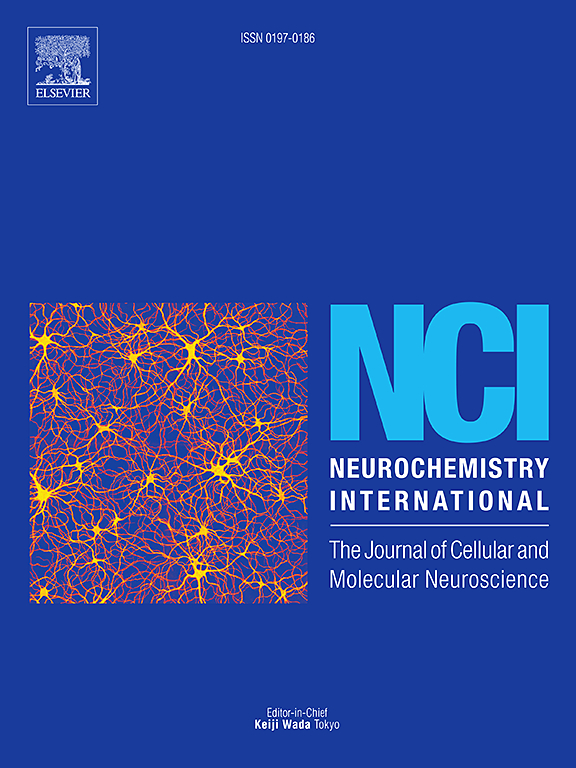产前酒精暴露后免疫系统标志物、肠道微生物群和短链脂肪酸产生的失调:一个发育的角度
IF 4
3区 医学
Q2 BIOCHEMISTRY & MOLECULAR BIOLOGY
引用次数: 0
摘要
产前酒精暴露(PAE)会严重影响胎儿发育,包括改变正在发育的免疫系统。免疫紊乱与肠道生态失调相结合,与大脑和行为功能障碍有关,但在PAE的背景下,这种关系知之甚少。本研究采用个体发生的方法来评估pae诱导的脑和血清细胞因子水平以及肠道微生物群的组成和代谢输出的改变。使用成熟的大鼠PAE模型,在三个产后(P)时间点(P8(婴儿期),P22(断奶期)和P38(青春期)评估血清,前额叶皮层,杏仁核和下丘脑中的细胞因子水平以及肠道微生物群组成和短链脂肪酸(SCFA)水平。雄性PAE大鼠在P8时,杏仁核和下丘脑的细胞因子水平升高,但前额叶皮层的细胞因子水平没有升高。这种神经免疫功能的改变在PAE女性中未见。PAE对中枢细胞因子水平的影响在22/38岁时减弱,而在同一年龄,PAE诱导的血清细胞因子水平改变在两性中出现。在P8时,PAE降低了两性的细菌多样性,但仅在P38时,在P38时,出现了PAE诱导的独特群落组成。两性都改变了特定的细菌分类群(如厚壁菌门),其中一些对生产SCFA丁酸很重要,在P22时PAE动物中减少了。这些结果表明,PAE导致免疫功能、肠道微生物群和SCFA产生的性别和年龄特异性改变,强调在未来的工作中需要考虑年龄和性别。本文章由计算机程序翻译,如有差异,请以英文原文为准。
Dysregulation of immune system markers, gut microbiota and short-chain fatty acid production following prenatal alcohol exposure: A developmental perspective
Prenatal alcohol exposure (PAE) can severely impact fetal development, including alterations to the developing immune system. Immune perturbations, in tandem with gut dysbiosis, have been linked to brain and behavioral dysfunction, but this relationship is poorly understood in the context of PAE. This study takes an ontogenetic approach to evaluate PAE-induced alterations to brain and serum cytokine levels and both the composition and metabolic output of the gut microbiota. Using a well-established rat model of PAE, cytokine levels in the serum, prefrontal cortex, amygdala, and hypothalamus as well as gut microbiota composition and short-chain fatty acid (SCFA) levels were assessed at three postnatal (P) timepoints: P8 (infancy), P22 (weaning), and P38 (adolescence). Male PAE rats had increased cytokine levels in the amygdala and hypothalamus, but not prefrontal cortex, at P8. This altered neuroimmune function was not seen in the PAE females. The effect of PAE on central cytokine levels was reduced at P22/38, the same age at which PAE-induced alterations in serum cytokine levels emerge in both sexes. PAE reduced bacterial diversity in both sexes at P8, but only in females at P38, where a PAE-induced unique community composition emerged. Both sexes had alterations to specific bacterial taxa (e.g., Firmicutes), some of which are important in producing the SCFA butyric acid, which was decreased in PAE animals at P22. These results demonstrate that PAE leads to sex- and age-specific alterations in immune function, gut microbiota and SCFA production, highlighting the need to consider both age and sex in future work.
求助全文
通过发布文献求助,成功后即可免费获取论文全文。
去求助
来源期刊

Neurochemistry international
医学-神经科学
CiteScore
8.40
自引率
2.40%
发文量
128
审稿时长
37 days
期刊介绍:
Neurochemistry International is devoted to the rapid publication of outstanding original articles and timely reviews in neurochemistry. Manuscripts on a broad range of topics will be considered, including molecular and cellular neurochemistry, neuropharmacology and genetic aspects of CNS function, neuroimmunology, metabolism as well as the neurochemistry of neurological and psychiatric disorders of the CNS.
 求助内容:
求助内容: 应助结果提醒方式:
应助结果提醒方式:


